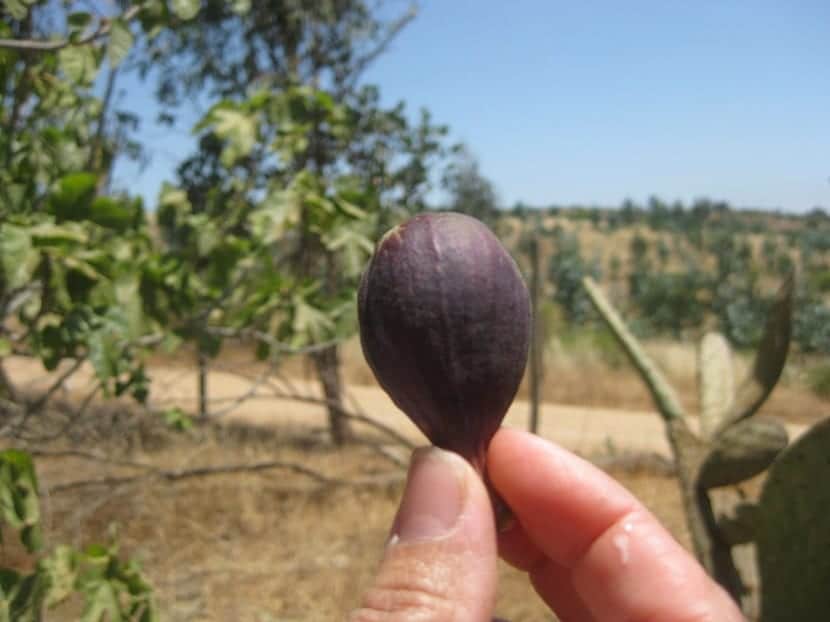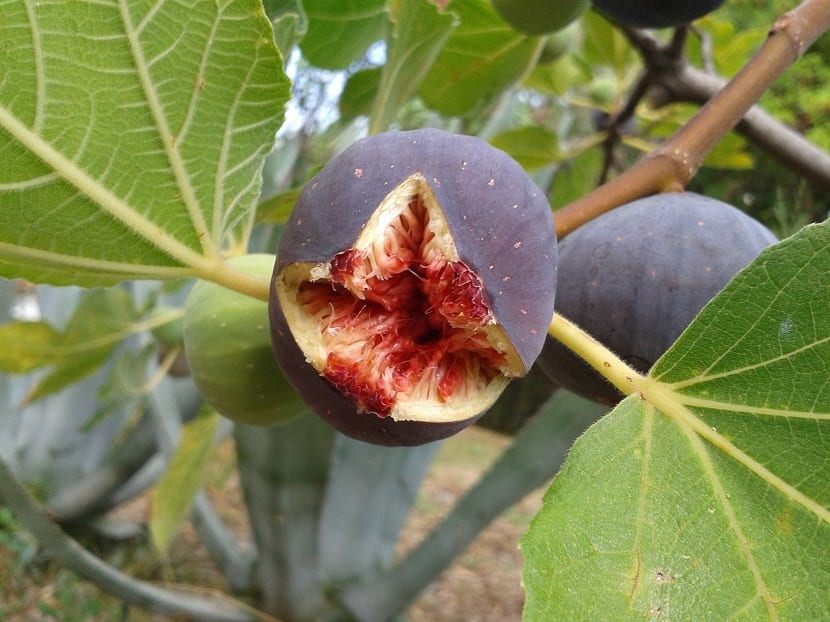
The Cabrahigo is about a (male) variety of Ficus carica, which only generates male flowers that have pollen in order to pollinate the fig trees (female) with female flowers and finally manage to fertilize them, since otherwise the main crop (of figs) would not be able to develop and, consequently, they would fall of the tree before it has matured.
Cabrahigo Characteristics

The Cabrahigo stands out for being the most primitive kind of plant with functional staminate flowers and short flowers. What's more, It is characterized by producing three generations of siconos annually, which are:
Mums
Generally grow on the branches of the previous year, and has a rounded shape, they tend to endure winter by staying on the branches and reach maturity when spring begins. Inside them lives the insect that is responsible for carrying out pollination.
Prohibits
Which are located in the axils of those leaves that grew recently; have an elongated shape and tend to ripen in early summer.
They stand out for being the most used during caprification, that is, during the laying of the figs with the insect that is inside them tied to the branches of female fig trees to pollinate.
suckers
Generally they grow throughout the summer and they are located around the ends of the annual branches.
Generally goat goats are not usually edible, although they are planted because a small wasp, known as "Blastophaga psenes", which is essential not only for pollination, but also for fruit set, lives inside.
Cabrahigos grow alongside female fig trees in crops ranging from moderate to intense; as usual, they prefer to be in full sun and have a shelter that allows them to protect themselves from the wind, they also require a soil that apart from being clayey, is perfectly drained.
Cabrahigo cultivation

Turkey is characterized by the main producer of figs globally, generating around 260.508 tons only in the year in 2011 and approximately two thirds of its production is originating from the variety known as "Sari Lop", which consists of the main variety to be cultivated not only to have a supply of fresh figs, but also step figs.
This variety, like many others, stands out for being Smyrna type, which means that It is not capable of growing a fig crop if it does not have the pollen generated by the goat figs.
La Higuera is about a deciduous tree, which is popularly known because of its fruits: the figs brevales.
In general, it is not very widespread as bonsai since it has difficulty branching its crown, in addition to the fact that its leaves are usually large. It has a gray and smooth bark; Deciduous and wrinkled leaves, usually palmate and light green on the lower side and a darker color on the upper side.
Most of the cultivated fig trees have only female flowers, so to achieve their fertilization it is necessary to have the presence of a male fig tree, called cabrahigo, which has both female and male flowers, in addition to having inside, as we have mentioned, a hymenopteran insect that grows inside the ovaries of the complete flowers and when leaving it, it is full of pollen with which it is responsible for fertilizing the female flowers.
It should be in full sunlight most of the time However, during the hottest periods, you should avoid being exposed to the sun's rays for a long time. It requires shade once the transplant is carried out, although it must be kept well lit in order to fully recover from it.
During winter you have to protect yourself from low temperatures and strong frosts, although you must feel the winter cold to be aware of the passing of the seasons, which means that must lose the leaves throughout the winter so that when spring arrives, it can grow and make the buds that are at rest awake.
With the arrival of autumn should be placed in some cool space, of approximately 5-8ºC, in order to recover from your winter rest.
Cold greenhouses located outside can be an excellent solution, especially for those areas where winters are much harsher, bearing in mind that it should be placed back outside as soon as possible.
At the end of spring it has to be taken out to the open air so that it receives all the sun. However, as it is grown in places that do not have frosts, it is possible to keep it outdoors during each season of the year.
Similarly, it should be borne in mind that it should only be watered when the substrate is slightly dry.

Taking into account that during the summer it will require a greater amount of water. In case it withers due to lack of water, it is best to water by placing it inside a bucket until the earth is completely moistened, and possibly it will recover.
By watering in a controlled manner there is the possibility of reducing the size of the leaves, so it is necessary not to start watering until they begin to decline slightly.
Subscribing must begin from the moment of sprouting and continue to do so until the summer ends; it is necessary to water every 15 days using liquid fertilizer specially indicated for bonsai.
For its part, and when it comes to pruning, be aware that it is necessary to let the branches grow throughout the entire vegetative period, so the shoots of the year will begin to be cut between 2-3 leaves at the end. summer, moment when the branch has managed to have between 6-8 leaves.
In this way, it is possible to achieve that both the branches and the leaves are able to mature enough for a new bud and fig sprout to emerge.
However, when the distance between the blades is too great, it is best to clamp before, that is to say cut the tips and do not wait until the summer is over to avoid that the distance between the buds is too great, and causes the birth of new branches.
Because the leaves are alternate, it will be necessary to take into account the direction in which the bud appears that sprouts from the first leaf that is on the branches after pruning, so that pruning is always carried out on a leaf that has a bud is directed towards the outside of the cup.
When the wound is completely healed and part of the piece left after pruning dries, after 2-3 months the stump will have to be removed using a concave pliers, leaving it flush with the trunk and then sealing it again with paste. However, there is a chance that the wound will never be covered with the new bark.